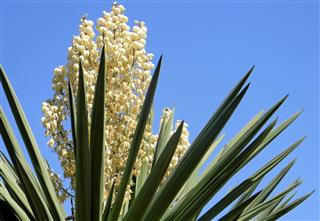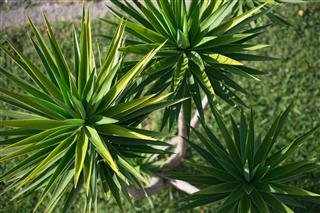
The yucca palm is highly adaptive to hot growing conditions and prolonged dry spells, hence caring for this perennial plant is not a concern for gardening enthusiasts.
Yucca is native to the arid regions of America and Caribbean. With over 50 known species, yucca plant has adapted in a wide range of climatic conditions. Hence, whether you grow it in indoors or outdoors, yucca palm requires a minimal effort. In fact, majority of the landscapers prefer growing yucca for xeriscape gardening, taking its drought tolerance into consideration.
Tips on How to Care for a Yucca Palm Tree
Select the Planting Site
Yucca requires bright sunlight for healthy growth, but it can also tolerate partial shade. So, select a sunlit site in case you are planting outdoors and for indoor gardening, place it near doors and windows, where the plant can receive indirect sunlight. If necessary, install lighting system to provide artificial light to the indoor yucca plants.
Ideal Soil Condition
Another important step regarding yucca palm tree care is preparing soil. Being native to arid conditions, yucca plants grow best in sandy and well-drained soil. Accordingly, supplement the garden soil with a correct dose of sand to ensure good drainage. For growing yucca plants in containers, lay 2 – 3 inch stone pebbles at the bottom of the pots and use sandy soil to allow proper drainage.
Expected Watering Frequency
The most crucial part in the plant care is correct watering. Excess watering is a common mistake make by gardeners, which leads to browning of the foliage tips and development of yellow halos in the leaf blade. These palm trees require moderate watering to ensure optimal growth and timely flowering. You can irrigate them once in 7 – 10 days, when the top soil layer becomes dry.
Incidences of Disease Infestation
The yucca palm tree is resistant to almost all types of diseases and pest that most houseplants are infected with. Nevertheless, too less or too much watering may weaken the plants, making them susceptible to bugs and mites. In such cases, spray the leaves with a dilute soapy mixture of water and regular dish washing soap.
Method to Propagate Yucca
Propagation of this flowering houseplant can be done by cutting offshoots or the mature stem. Strip dried leaves from the lower section and check whether the stem is brown colored or not. If yes, it is matured and ready for cutting. Using a sharp knife, cut the stem or rhizome (for stemless yucca) and allow it to air dry in a cool and dry place. You can dust the cut surface with a fungicide mixture to prevent fungal attacks.
You can Replant Yucca
After cutting the mature yucca stem or offshoot, replant it in a pot or garden. Prepare the potting mixture or garden soil with sufficient amount of sand. For indoor plantation, fill pots with soil mixture. After this, make a hole in the soil, large enough to accommodate the cutting. Place yucca cutting in the hole and fill it with soil. Press gently to remove air pockets and deeply water the new palm. Yucca palm can be propagated using seeds, shoots or cuttings. All work fine, however propagating from seeds is a longer procedure so you can use cuttings.
More Information on Yucca Palm
Yucca is a popular ornamental plant that belongs to the family Agavaceae. It is identified both as a shrub or a small tree, mainly because of its woody stem and height, in which some species grow to more than 8 feet tall. The notable features of this perennial palm are the tough, evergreen, sword like leaves borne in a rosette pattern and long panicle inflorescence, loaded with whitish blooms. Another character of the yucca palm tree worth mentioning is its mutualistic pollination, which is done by the yucca moth.
Yucca palm is known by varied names in different regions, some of which are soapweed, Adam’s needle, Spanish bayonet, or Spanish dagger. The white colored yucca flower is delegated as the state flower of New Mexico. Apart from the attractive foliage and blooms, most of the yucca plant parts are edible, including the flowering stalks, flowers, fruits, seeds, and roots.
With correct steps, your newly planted yucca will develop roots and get established to the soil within a season or so. While growing it indoors, do not forget to move it outside at regular intervals. Remember that this plant is a native of desert region, so bright light and heat are necessary for their growth. Keep these simple growing tips in mind, and you can surely maintain a healthy yucca palm that will give a green touch to your interior design.

